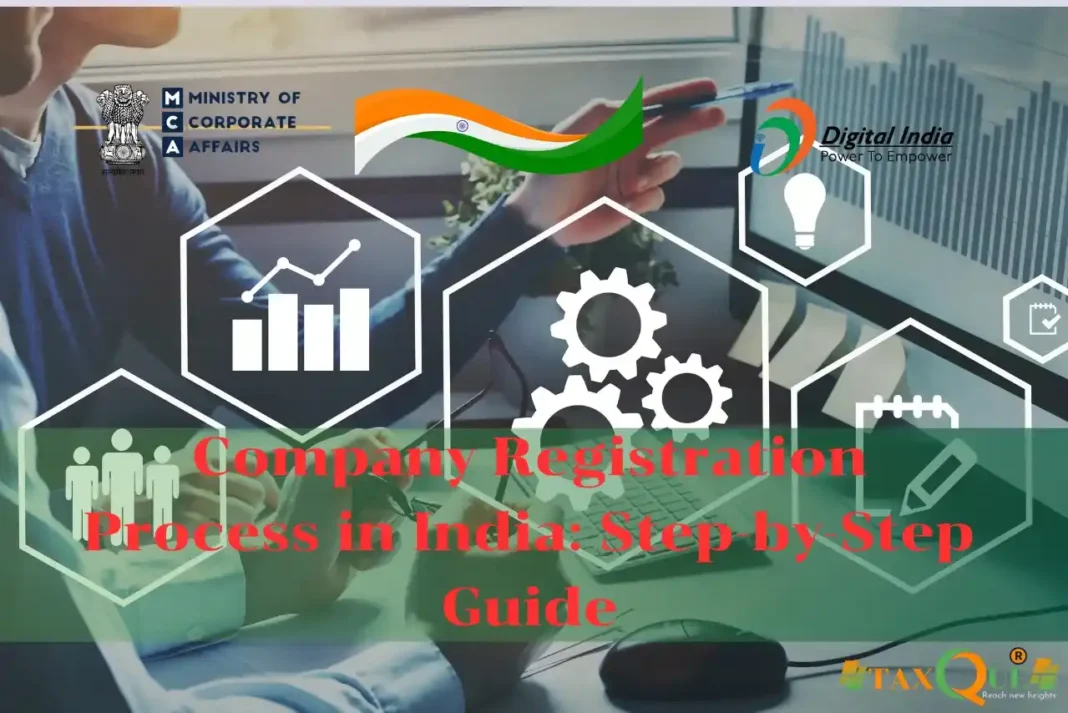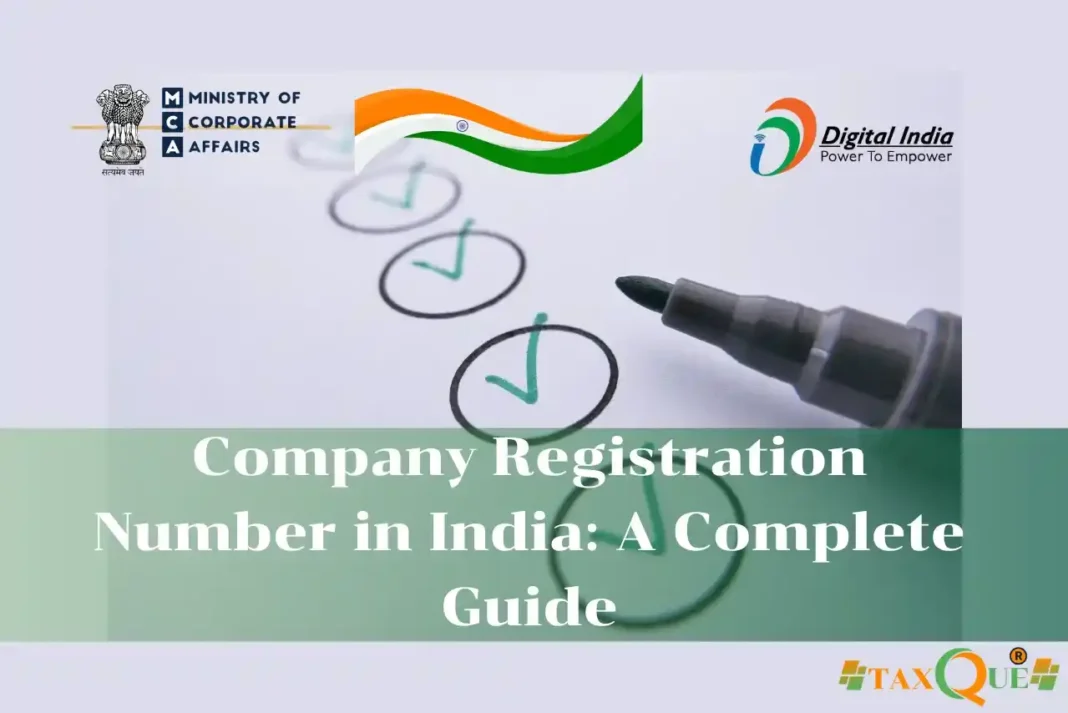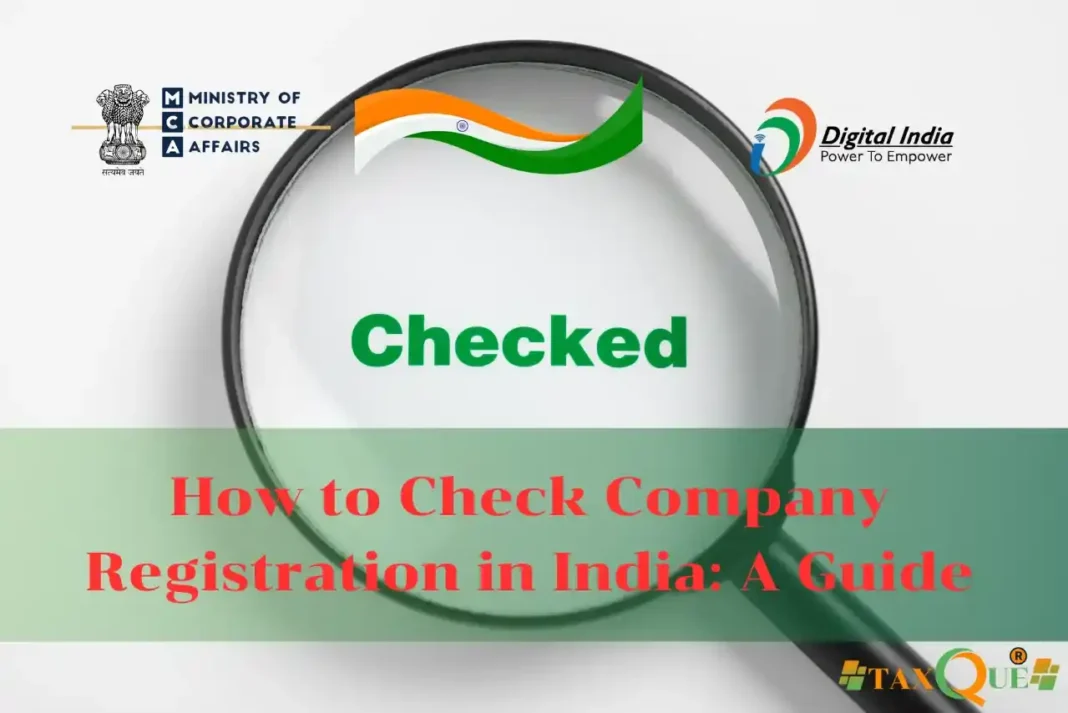Introduction
The company registration process in India is a structured procedure to establish a legal business entity under the Companies Act, 2013. Whether setting up a private limited, Section 8, or Nidhi company, understanding the steps ensures compliance and operational legitimacy. This blog provides a detailed guide on the company registration process, covering requirements, steps, and post-registration compliances, and highlights how TaxQue streamlines the journey for entrepreneurs.
What Is the Company Registration Process?
The company registration process involves obtaining a Certificate of Incorporation from the Ministry of Corporate Affairs (MCA) to legally form a company. It includes securing a unique name, registering directors, and fulfilling statutory requirements. The process is primarily online via the MCA’s SPICe+ portal, ensuring efficiency for private limited, Section 8, or Nidhi companies.
1. Types of Companies and Requirements
Before starting the company registration process, choose the company type and meet its requirements:
- Private Limited Company: Minimum 2 directors, 2 shareholders, ₹1 lakh authorized capital.
- Section 8 Company: Non-profit for charitable purposes, requires 2 directors, license under Section 8.
- Nidhi Company: Public limited, 7 members (3 directors), ₹10 lakh paid-up capital, “Nidhi Limited” in name.
- Common Requirements: PAN, Aadhaar, address proof for directors; registered office address.
2. Step-by-Step Company Registration Process
Here’s a detailed checklist for the company registration process in India:
| Step | Task | Timeline |
|---|---|---|
| Obtain DSC | Secure Digital Signature Certificate for directors | 1–2 days |
| Apply for DIN | Obtain Director Identification Number | 1–2 days |
| Name Reservation (RUN) | Reserve unique company name via SPICe+ | 2–3 days |
| File SPICe+ (Part A & B) | Submit incorporation forms, MoA, AoA | 5–7 days |
| PAN/TAN Allocation | Auto-assigned with Certificate of Incorporation | Post-approval |
| Open Bank Account | Open current account with incorporation docs | 1–2 days |
Step 1: Obtain Digital Signature Certificate (DSC)
- Directors need Class 3 DSC for e-signing forms.
- Apply via certifying authorities listed on the MCA portal.
- Provide PAN, Aadhaar, and photo; DSC is issued in 1–2 days.
Step 2: Apply for Director Identification Number (DIN)
- Up to 3 directors can apply for DIN via SPICe+ (Form INC-32).
- Submit identity proof (Aadhaar, passport) and address proof (utility bill).
- DIN is allocated post-verification, typically within 1–2 days.
Step 3: Reserve Company Name
- Use the SPICe+ Part A (RUN service) on the MCA portal to reserve a unique name.
- Follow MCA naming guidelines (e.g., “Private Limited” for private companies, “Nidhi Limited” for Nidhi).
- Name approval takes 2–3 days; resubmit if rejected.
Step 4: File Incorporation Forms (SPICe+ Part B)
- Submit SPICe+ Part B (Form INC-32) with:
- Memorandum of Association (MoA) and Articles of Association (AoA).
- Director details, registered office address (rent agreement/utility bill).
- Declaration of compliance (Form INC-9).
- Attach PAN, Aadhaar, and address proofs for directors/shareholders.
- For Nidhi companies, file Form NDH-4 within 120 days post-incorporation.
- For Section 8, obtain a license via Form INC-12 before SPICe+.
- Approval takes 5–7 days, issuing the Certificate of Incorporation, PAN, and TAN.
Step 5: Open Bank Account and Complete Compliances
- Open a current bank account using the Certificate of Incorporation, PAN, and MoA.
- Apply for GST registration on the GST portal if turnover exceeds ₹20 lakh (services) or ₹40 lakh (goods).
- Ensure post-registration compliances (e.g., Form AOC-4, MGT-7, ITR-6/7).
3. Post-Registration Compliances
After completing the company registration process, ensure:
- ROC Filings: File Form AOC-4 (financials) by October 30 and MGT-7 (annual return) by November 29 post-AGM.
- Tax Filings: Submit ITR-6 (private/Nidhi) or ITR-7 (Section 8) by October 31 on the Income Tax portal.
- Nidhi-Specific: File NDH-1 (member list) by June 29 and NDH-3 half-yearly.
- Audits and Meetings: Conduct statutory audits and hold 4 board meetings and an AGM by September 30.
4. Penalties for Non-Compliance
Failing to follow post-registration compliances can lead to:
- Fines: ₹100/day for late ROC filings; ₹5,000 for late ITR; ₹200/day for GST returns.
- Director Disqualification: Barred for 3 years of non-filing under Section 164.
- Company Status: Struck off by ROC under Section 248.
TaxQue simplifies the company registration process and post-registration compliances with expert support for ROC, GST, and ITR filings. Visit TaxQue’s company registration guide or compliance services for seamless solutions.
FAQs
1. What is the first step in the company registration process?
Obtain a Digital Signature Certificate (DSC) for directors to e-sign incorporation forms.
2. How long does the company registration process take?
The entire process, from DSC to Certificate of Incorporation, takes 10–15 days if all documents are correct.
3. What documents are needed for company registration?
PAN, Aadhaar, address proof for directors/shareholders, and registered office proof (rent agreement/utility bill).
4. Is GST registration mandatory after company registration?
GST is required only if turnover exceeds ₹20 lakh (services) or ₹40 lakh (goods).
5. How does TaxQue assist with the company registration process?
TaxQue offers end-to-end support for DSC, DIN, name approval, and post-registration compliances. Explore TaxQue’s Nidhi compliance guide.
Conclusion
The company registration process in India is a gateway to establishing a legal business entity, requiring careful adherence to MCA guidelines. From obtaining DSC and DIN to filing SPICe+ and ensuring post-registration compliances, each step is critical. Platforms like TaxQue streamline the company registration process and ongoing obligations with expert tools and support. Start your business journey today, stay compliant, and build a trusted brand.





